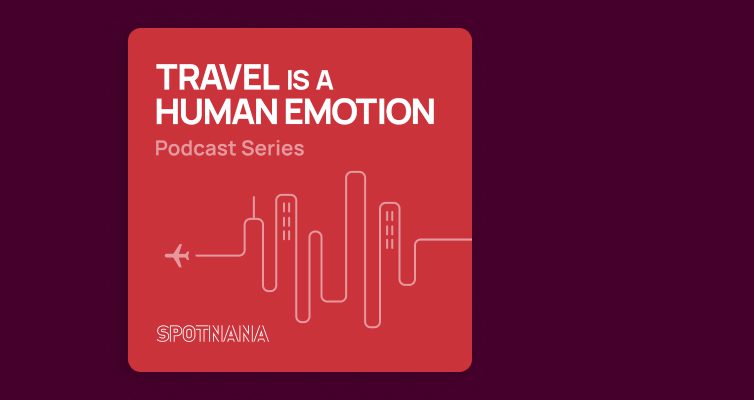The market for travel sales is massive
Over $2 trillion is spent on travel every year as billions of people fly around the world to connect with customers, build stronger teams, and enjoy time off.
This guide is designed to help you quickly get up to speed on how the travel industry works and how you can generate revenue through travel sales.

Overview of travel content sources
First, it’s essential to understand where travel content comes from. “Travel content” is an industry term that describes everything that goes into creating an offer for a traveler. This includes listings of available travel inventory for flights, hotel rooms, etc. along with pricing, scheduling, photos, amenities, and fare rules.
There are many sources of travel content that need to be aggregated, normalized, de-duped, and presented to travelers in a unified fashion to create a competitive travel solution. Here is a high level overview:
- Global Distribution System (GDS) – these companies aggregate travel content from participating air, hotel, and car rental suppliers. The leading GDS providers were founded in the 1960’s and 70’s, rely on outdated technology, and provide access to only a fraction of the content needed for a competitive travel solution.
- Low-Cost Carrier (LCC) – LCCs include airlines like Frontier Airlines, EasyJet, and RyanAir that focus on selling low cost fares with ancillaries like baggage and seat assignments charged separately. To reduce costs, they distribute their inventory through specialized content aggregators instead of GDS providers.
- New Distribution Capability (NDC)– NDC is an XML-based data standard for airline offers that was introduced in 2012. It was created to give airlines the ability to package and price their offers with greater flexibility as well as provide better experiences to travelers. While it’s possible to access limited NDC capabilities through GDSs and NDC aggregators, leading travel platforms have developed direct NDC integrations with major airlines to gain access to the best content, rates, and traveler experiences.
- Direct connection – some airlines require a direct integration to proprietary APIs to access all of their inventory and benefit from the best prices. Spotnana has developed a direct integration to Southwest Airlines, for example.
- Online Travel Agency (OTA) – major OTAs like Expedia and Booking.com aggregate hotel content and support integrations with travel platforms.
- Hotel aggregator – some companies specialize in aggregating and distributing hotel content, typically in a specific region of the world.
- Rail aggregator – similarly, some companies specialize in aggregating local rail content.
Each of these content sources has different data structures, APIs, and supported payment methods. In addition, to sell travel it’s necessary to negotiate distribution agreements with each travel content source and integrate these disparate sources into a single, standardized online booking experience.
Spotnana simplifies this complexity by providing access to all of these travel content sources through a single API.
I think of it as kind of like the “Stripe for travel.”
– Henrique Dubugras, Co-Founder and Co-CEO at Brex
Overview of core travel technology
To effectively sell travel, you need to assemble a comprehensive technology stack that includes the following components:
- Online Booking Tool (OBT) – an OBT provides the user interface that travelers, arrangers, and guests use to book their travel. It also provides the user interface for travel admins to manage users, policies, payment methods, suppliers, duty of care, sustainability, analytics, and more. Most modern OBTs include both a desktop and mobile app booking experience.
- Profiles – a single source of truth for traveler profiles needs to be integrated across all travel technology components.
- Agent Desktop – travel agents require tools to provide assistance to travelers. This includes technology for managing queues of tasks to handle traveler requests, a unified interface that eliminates the need to go into separate tools for each content source, tools for manually handling any parts of the booking process that aren’t fully automated, and analytics on agent performance.
- Chat, email, and Computer Telephony Integration (CTI) – in addition to tools used to manage bookings, agents need technology that makes it easy to service travelers over chat, email, and phone.
- Customer feedback – to measure customer satisfaction (CSAT), a survey tool is needed to capture feedback after each service interaction.
- Mid-office – this is technology that automates tasks involved with bookings, cancellations, and exchanges by using scripts to populate unstructured text into booking records called Passenger Name Records (PNRs) that are filed through a GDS. Mid-office tools also handle a range of traveler email communications, including booking confirmations, and automate the tasks that get sent to agent queues for manual processing and quality control.
- Analytics – automation is needed to extract the right data elements from unstructured text in PNRs and deliver analytics and reporting capabilities through third-party tools.
- Payments – a long list of payment gateways and integrations are needed to support central, virtual, and individual credit cards as well as travel payment methods that are unique to airlines for vouchers and credits.
- Duty of Care – to keep travelers safe on the road, technology is needed to track where travelers are and enable rapid outreach if an emergency occurs.
- Carbon calculator – a growing number of companies need to report Scope 3 emissions or want to achieve net zero emissions goals. Carbon calculators help travelers estimate emissions for specific travel options. This data can be fed into analytics tools to provide travel managers with insights into overall carbon emissions for their travel program.
- Price assurance – to help companies get the best possible price for bookings, price assurance tools periodically check to see if prices have dropped post-booking and automate the process of canceling and rebooking a hotel or flight.
- Unused ticket management – this technology tracks unused ticket credits for flights, so a workflow can be developed that enables a traveler to redeem a credit toward the purchase of a flight.
- Back office – this is technology that serves as the accounting system for managing financials including booking fees and supplier revenue for bookings, ancillaries, exchanges, and cancellations.
- Content sources – as described above, content integrations are a key part of the overall travel technology stack.
Spotnana provides all of this technology through a single, unified platform for all user personas including travelers, arrangers, admins, and travel agents.
In addition, we have developed a new, modern infrastructure for travel sales with a microservices-based architecture that eliminates the need for mid-office technology and does not use PNRs for order management. Our platform is designed to be easily white labeled, integrated, and embedded in other systems.
Spotnana has been an incredible partner. Their technology is easy to integrate, they deliver an exceptional experience for both travelers and admins, and their incredible pace of innovation is only accelerating.
– Naveen Singh, CEO at Center
Key requirements for servicing travelers
Travelers require assistance for a wide range of reasons. Travelers might have complex booking needs that are unsupported by a booking tool. In addition, some travelers and executive assistants are uncomfortable booking online and prefer to make requests via email or a phone call.
Sometimes a traveler wants advice on which hotel property to book or assistance finding the cheapest booking option for a costly international trip. In addition, when travel disruptions occur – due to weather, flight cancellations, schedule changes, or other issues – travelers may want the assurance that comes with speaking with an agent to ensure they’re finding the best possible way to reach their destination.
For all these reasons and more, travel sellers need to hire, train, and support enough travel agents to support the volume of travelers that are purchasing trips.
Spotnana simplifies this challenge in several ways:
- Advanced self-service capabilities – through our advanced architecture, we automate more complex booking workflows than other travel platforms and enable travelers to book more trips on their own, including booking multi-city flights, mixing fare classes, mixing content sources, and redeeming unused ticket credits. We also enable travelers to manage complex changes and cancellations on their own, which often drive the majority of post-ticketing service requests.
- Turn-key servicing – you can choose to outsource servicing to Spotnana and use our skilled agents to support your travelers in a seamless white labeled fashion.
- Agent training – If you prefer to hire your own agents, Spotnana will provide the core technology and assist with training. Our modern Agent Desktop is easy for new hires to use and does not require knowledge of how to work in complex, outdated tools provided by various travel content providers.
- Global servicing – Spotnana’s advanced Agent Desktop allows any agent to service any traveler from any location. This greatly reduces the number of countries where agents need to be staffed.
Understanding travel revenue sources
There are several sources of revenue for travel sellers. The largest revenue opportunities are in the following areas:
- Booking fees – typically travelers pay a fee for booking a trip segment or for booking an entire trip. These fees are usually lower for online bookings and higher when an agent is contacted to complete an “offline booking.”
- Supplier revenue – travel suppliers may offer a travel seller a nominal flat fee for a booking or a small percentage-based fee tied to the amount spent on a booking.
- Servicing fees – travel sellers often charge a fee for contacting an agent to change or cancel a booking.
- Add-on products and services – travel sellers can also develop and monetize various add-ons, including VIP traveler services, advanced analytics, advanced duty of care, carbon offsets, various travel ancillaries, and assistance with managing meetings and events.
Spotnana charges a simple, discounted trip fee with room for partner markups and servicing fees if we provide agent support. Additional details can be discussed with our partner sales team. To identify the best possible arrangement, we seek to understand your business strategy, your goals, your preferred servicing model, and the scale of the opportunity for us to work together.
With Spotnana our goal is to deliver the best of all worlds – access to the widest range of travel content sources delivered through a single set of travel APIs, industry-leading technology for travelers, admins, and agents, comprehensive servicing options, and a clear path to generating revenue.



